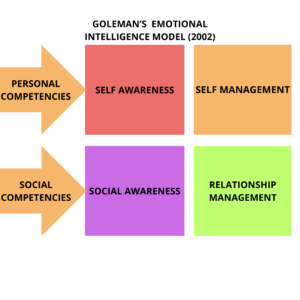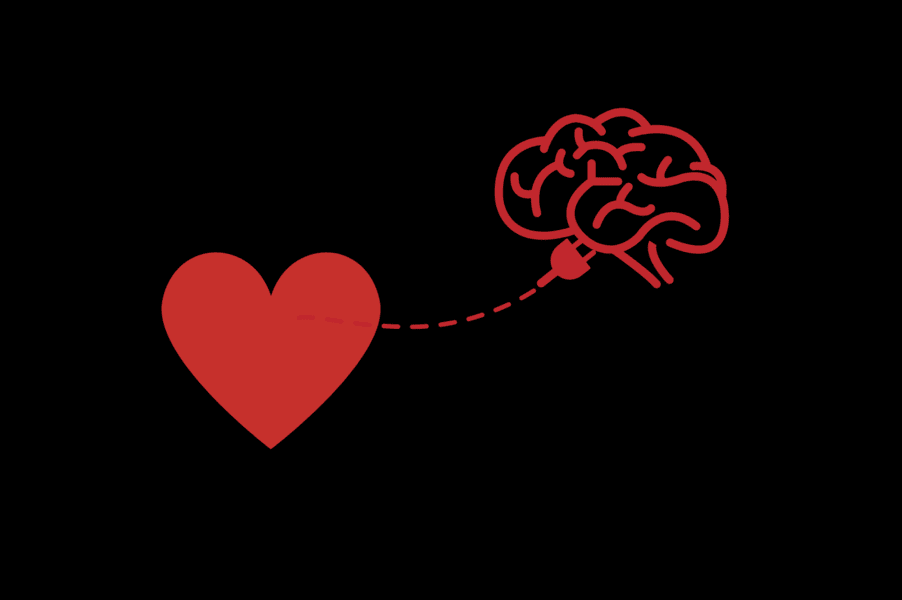Understanding Emotional Intelligence
Most of us have heard about IQ testing for intelligence, but how many of us have heard about EQ testing for emotional intelligence?
Emotional intelligence (EI) is a concept made popular by Peter Salovey and John D. Mayer in 1990, and further brought into the mainstream by Daniel Goleman in his 1995 book, “Emotional Intelligence: Why It Can Matter More Than IQ.” EI can be defined as having the ability to recognize, understand, and manage your own emotions and the emotions of others (Mayer et al., 2024).
What are the benefits of high Emotional Intelligence
Since 1995, Goleman reported that a high EI does wonders for general well-being. This overall enhancement leads to individuals who can manage stress better, build healthy relationships and are more resilient during tough times. The idea is that, EI can be used instead of IQ to give a better prediction of success in life and work (Goleman, 1995)

Adapted from Goleman, D., Boyatzis, R.E. and Mckee, A. (2002). The new leaders : transforming the art of leadership into the science of results. London: Sphere.
According to Goleman’s Emotional Intelligence Model there are four (4) key areas:
Self-Awareness: You can recognize and understand your moods, and emotions, and drives, how they affect others.
Self-Management: You can control or redirect negative impulses and moods, you can judge the situation and then think before acting.
Social Awareness: You understand other people’s emotions and you treat them according to their emotional reactions (empathy).
Relationship Management: You can manage relationships and create networks, making conversations that matter in creating a sense of togetherness.
Further research by Dr. Lisa Feldman Barrett suggests that individuals with high EI can better regulate their emotions, leading to improved mental and physical health outcomes (Barrett, 2006). Davidson’s studies on the brain also reveal that those with higher EI show more activity in brain regions associated with empathy and emotional regulation (Davidson, 2001).
Emotional Regulation is key
Another important benefit of being highly emotionally intelligent is having an improved system to regulate your emotions. For instance, at the office, team member Sarah is given critical feedback on a project she has worked tirelessly on, but this feedback was unexpected. Most individuals may take the critique hard and either feel or act in an upset or defensive manner, but Sarah has a high EI and she is able to recognize her initial feelings of disappointment and frustration.
By not reacting impulsively, she can take a moment to process her emotions and respond in a constructive way. She has learned that taking deep breaths to calm herself (emotional regulation) helps her to approach the feedback with an open mind, viewing it as an opportunity for growth.
Sarah can even empathise with her manager’s perspective and so she knows the feedback is aimed at improving the project rather than personal criticism. This highly emotional intelligent approach not only helps Sarah manage her own emotional response but also maintains a positive working relationship and contributes to a supportive office environment.
Why Should We Care About Emotional Intelligence?
Improved EI has a direct positive effect on our mental health, relationships and overall quality of life. Besides improving mental health, it also affects work related relationships. The ability to navigate conflicts more effectively is critical in maintaining a healthy and fulfilling career. By developing self-awareness, self-regulation, empathy, and social skills, we can improve our ability to manage stress, navigate relationships, and cope with life’s challenges.
Learn more about how Cognicorp can help with developing emotional intelligence by visiting Cognicorp’s website.
References
Barrett, L.F. (2006). Are Emotions Natural Kinds? Perspectives on Psychological Science, 1(1), pp.28–58. doi:https://doi.org/10.1111/j.1745-6916.2006.00003.x.
Goleman, D. (1995). Emotional Intelligence. Bantam.
Goleman, D., Boyatzis, R.E. and Mckee, A. (2002). The new leaders : transforming the art of leadership into the science of results. London: Sphere.
Mayer, J.D., Caruso, D.R., Sitarenios, G. and Escobar, M.R. (2024). How many emotional intelligence abilities are there? An examination of four measures of emotional intelligence. Personality and Individual Differences, [online] 219, p.112468. doi:https://doi.org/10.1016/j.paid.2023.112468.
Wager, T.D., Davidson, M.L., Hughes, B.L., Lindquist, M.A. and Ochsner, K.N. (2008). Prefrontal-Subcortical Pathways Mediating Successful Emotion Regulation. Neuron, [online] 59(6), pp.1037–1050. doi:https://doi.org/10.1016/j.neuron.2008.09.006.

